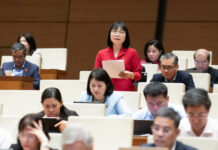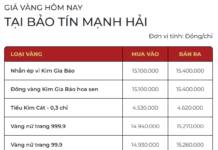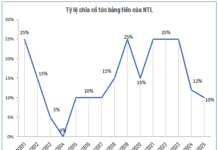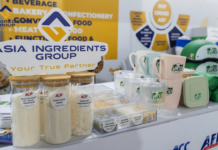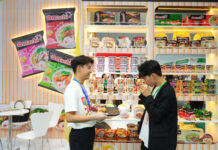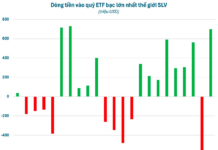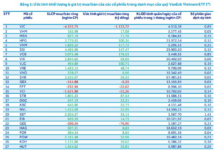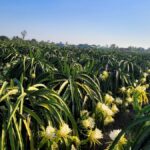At the “Agricultural Restructuring” forum held by the Vietnam Cooperative Alliance on the morning of August 28, 2024, Ms. Cao Xuan Thu Van, President of the Vietnam Cooperative Alliance, said that in the first eight months of 2024, agricultural, forestry, and fishery production activities in the country continued to have many bright spots. This partly affirms that the agricultural restructuring is on the right track. This includes the important contribution of the cooperative economic sector with more than 20,000 agricultural cooperatives and tens of thousands of agricultural cooperative groups, along with over 3.8 million cooperative members who are farmers.
VALUE CHAIN LINKAGES ARE A CRUCIAL ISSUE IN AGRICULTURAL RESTRUCTURING
There are currently over 4,000 cooperatives participating in value chain linkages in the country, accounting for nearly 13% of the total number of cooperatives. It can be said that to promote the best consumption of agricultural products and enhance the value of Vietnamese agricultural products, the effective and sustainable development of agricultural value chains is a matter of survival in agricultural restructuring.
However, the President of the Vietnam Cooperative Alliance believes that one of the biggest limitations at present is the loose linkage between actors in the same link (horizontal linkage) as well as between links (vertical linkage) in the value chain. The linkage between cooperative groups/cooperatives in some sectors is also only seasonal and has not yet shared risks and benefits, so it has not achieved high sustainability.
Speaking at the forum, Mr. Phung Duc Tien, Deputy Minister of Agriculture and Rural Development, said that in implementing the policy of restructuring, the agricultural sector has achieved many important achievements, with growth maintained at a high level. Many value chains of industries have been formed and developed strongly, and many agricultural products have been present in international markets (including demanding markets such as the US, EU, and Japan). The output of key crops and livestock such as rice, coffee, rubber, fruits, and seafood is increasing.

Many models of production with very high economic value have emerged across the country, such as the model of concentrated specialized fruit gardens (in Can Tho with an average revenue of VND 500 million/ha/year) and the model of super-intensive shrimp farming in Bac Lieu (with a yield of 80 tons/ha/year and revenue of VND 9.2 billion/ha)…
Along with trade promotion activities, the market for agricultural products has continuously expanded, with agricultural product exports shifting strongly to formal channels and present in 280 countries and territories, ranking second in Southeast Asia and 15th in the world.
“The total export turnover of agricultural, forestry, and aquatic products in the period of 2021 – 2023 was over 155.2 billion USD, and in 2024 is expected to reach 55-56 billion USD. Of which, there are 6 products with an export turnover of over 3 billion USD.”
Mr. Phung Duc Tien, Deputy Minister of Agriculture and Rural Development.
To effectively and sustainably develop agricultural value chains in the future, Deputy Minister Phung Duc Tien proposed six key solutions.
First, the restructuring of the agricultural sector needs to be more substantial and effective: transforming the structure of crops and livestock towards increasing value addition and sustainable development.
Second, the application of high technology in agricultural production is one of the important solutions to improve the efficiency and sustainability of agricultural value chains.
Third, training and improving the quality of human resources in the agricultural sector.
Fourth, strengthening the close linkage between actors in the agricultural value chain from production to processing and consumption is the key to enhancing efficiency and ensuring sustainability.
Fifth, expanding and developing domestic and international agricultural product markets is an important solution to improving the efficiency of agricultural production.
Sixth, sustainable agricultural development must go hand in hand with environmental protection and rational use of natural resources. Measures such as the use of biological fertilizers and pesticides, efficient water management, and protection of land and biodiversity should be widely applied.
TAXATION IN AGRICULTURE HAS MANY DRAWBACKS
Commenting that Vietnamese agriculture has abundant production capacity, diverse and plentiful products, and the ability to supply large volumes to the world market with competitive advantages from 16 FTAs covering major markets such as CPTPP, EU, and ASEAN, Mr. Hoang Trong Thuy, an agricultural expert, said that Vietnam’s agricultural exports still face five major challenges: (i) high prices of raw materials; (ii) no signs of reduction in transportation and logistics costs; (iii) constantly changing import policies of other countries; (iv) increasing requirements for agricultural product standards; and (v) foreign consumers tend to tighten spending due to inflationary pressures.
To promote agricultural exports, Mr. Thuy recommended focusing on exporting 10 key agricultural products that already have stable markets, along with implementing the protocol on exporting frozen durian, fresh coconut, and crocodile meat to the Chinese market. At the same time, it is necessary to be determined in removing the “yellow card” imposed by the EU on seafood as soon as possible. Developing infrastructure for warehouses and logistics systems, and transportation by rail and sea is also crucial. Improving sustainable agricultural production processes and ensuring transparency in tracing the origin of agricultural products to meet the requirements of importers is essential.

Regarding tax and credit policies, Mr. Nguyen Van Phung, a senior expert on Taxation and Enterprise Management, and former Deputy Director of the Tax Policy Department (Ministry of Finance), said that this is one of the biggest barriers for farmers, businesses, and agricultural cooperatives.
According to Mr. Phung, value-added tax (VAT) applied to fertilizers is one of the important factors affecting agricultural production costs. Previously, the VAT Law stipulated a low VAT rate of 5% for fertilizers, and fertilizer production enterprises were entitled to VAT refund. Since 2015, fertilizers have been exempted from VAT with the expectation that this would reduce fertilizer prices and benefit farmers. However, with the mechanism stipulated by the Law, the exemption has led to fertilizer production enterprises not being able to deduct input VAT, resulting in increased fertilizer prices. The implementation of the VAT policy on fertilizers has had the opposite effect, increasing agricultural production costs.
Mr. Phung also mentioned that enterprises and cooperatives operating in the stage of agricultural product preprocessing are currently subject to “no declaration or payment of VAT”, so all input VAT paid (for investment in the purchase of preprocessing equipment, clean slaughtering, disease treatment, cold storage for post-harvest preservation, packaging, and transportation) must be recorded in the books and cannot be treated as deductible expenses when calculating corporate income tax. As a result, enterprises specializing in preprocessing, clean slaughtering, and post-harvest preservation are facing capital constraints and losing 10% of their capital.
To remove these bottlenecks and reduce the cost burden on farmers, Mr. Phung recommended applying a low VAT rate on fertilizers and allowing for VAT deduction and refund to enable fertilizer production enterprises to reduce prices for farmers. At the same time, he suggested removing the “no declaration or payment of VAT” regulation for stages after agricultural production, such as preprocessing, clean slaughtering, post-harvest preservation, disease treatment, and packaging…
Farmers in the Mekong Delta Region Transform Their Lives through Agricultural Economy
Agricultural production plays a crucial role in the Mekong Delta region. Especially since the issuance of Resolution 13 by the Politburo of the 13th Party Congress on the direction of economic and social development, ensuring national defense and security in the Mekong Delta region until 2030, with a vision towards 2045, and Resolution 120/NQ-CP by the Government on sustainable development in the Mekong Delta region, conditions have been created for the economic development of the region.
Surpassing $2 billion: From the “Spilt the bitter melon” trend to an unprecedented export record in Vietnam
In China, in the year 2023, there is a trend of viral videos called “Cutting Solo Durians”, inspired by the singer Tăng Duy Tân’s song “Cắt đôi nỗi sầu”. Alongside this trend, the phrase “Durian: Sweet gratitude or bitter revenge?” has become popular.








